Have you ever wondered what truly sets different types of log homes apart? Understanding these unique styles can transform your dream cabin into reality, ensuring your home reflects both your taste and lifestyle perfectly. Ready to discover the hidden gems of log home options?
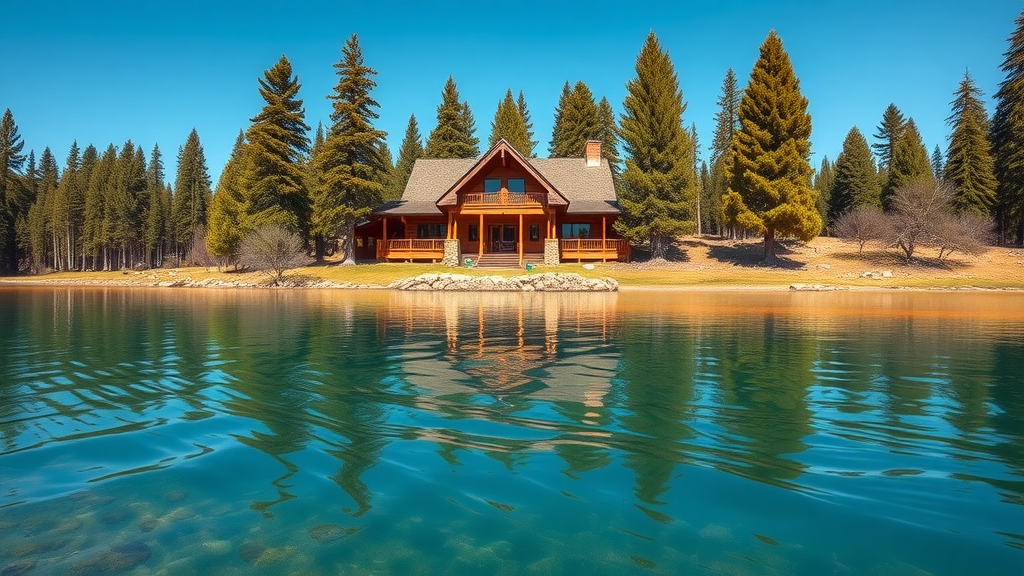
Unlocking the Secrets of Types of Log Homes: Your Ultimate Guide
Whether you’re envisioning a rustic retreat or a modern mountain getaway, uncovering the full range of types of log homes is the first step to realizing your dream home. Log homes and log cabins come in several construction styles, each with its own appeal, structural advantages, and maintenance demands. By understanding these distinctions, you can choose a log home that not only suits your taste but also matches your practical needs.
In this comprehensive guide, you’ll gain insight into the core log home construction methods, compare the merits of round log and beam log styles, and learn which materials—like Douglas fir and pine—offer the aesthetics and durability you want. We’ll also walk you through what sets full scribe, chink style, Swedish cope, timber frame, and post and beam log homes apart, empowering you to make an informed decision for your future dwelling.
-
What You’ll Learn
- An overview of all the main types of log homes and log cabins
- Distinctions between log home construction methods
- The pros and cons of each log style, including round log, timber frame, full scribe, Swedish cope, and more
- Practical considerations for log home buyers and builders
A Brief History of Log Home Construction
The story of log home construction is as rich and enduring as the forests that fuel it. Log homes trace their roots back to ancient northern Europe, where sturdy structures were crafted using full log techniques out of locally harvested timber. The traditions that began with early log cabins in Scandinavia and Russia migrated to North America with settlers who prized the resilience and accessibility of hand-hewn logs.
Over centuries, these early log homes evolved from single-room shelters to complex multi-room residences. Innovations in home construction—like refined joinery, advanced weatherproofing, and new materials—have made the idea of building a dream log home not just a possibility, but a popular choice. Today’s log homes combine rustic beauty with modern comforts, echoing their heritage while meeting contemporary expectations for sustainability and energy efficiency.
Beam log home, full log construction in action.
How Traditional Log Cabins Evolved into Modern Types of Log Homes
Originally, log cabins were assembled with round or hand-hewn logs stacked horizontally, sealed with mud or moss instead of modern chinking. Their straightforward construction technique made them fast and practical in untamed landscapes, but limitations in warmth, size, and comfort persisted. As architectural knowledge grew, so too did the styles and sophistication of log home construction.
Today, building a log home involves choices—from handcrafted full scribe logs to engineered timber frame hybrids—that shape not only the look and feel of your home but also its strength, insulation, and longevity. Regional influences still play a role, with log homes in the North favoring thicker logs for insulation, while mountain retreats often incorporate hybrid or post and beam elements for larger windows and open interiors.
"Every style of log home construction carries its own legacy, construction technique, material character, and regional influence."
Types of Log Homes: Core Log Styles Explained
Let’s break down the most popular types of log homes and log cabins seen in North America today. Choosing between full scribe, chink style, Swedish cope, timber frame, and post and beam log homes means weighing structure, budget, appearance, and future maintenance. Here’s what sets each style apart so you can narrow down the best log home style for your needs.
Understanding the distinctions between each log home style ensures that your home’s beauty runs deep—down to its construction techniques and materials. Let’s explore how these types cater to both tradition and innovation, influencing not just curb appeal but energy efficiency, moisture resistance, and comfort for years to come.
Full Scribe Log Homes: Timeless Beauty and Precision
Full scribe log homes are a testament to age-old craftsmanship and modern engineering. This style uses full log walls, with each log expertly scribed to fit the one beneath it for a tight, gap-free seal. This construction method delivers not only exceptional insulation and weatherproofing, but also a rustic, seamless aesthetic that highlights the logs’ natural curves and knots.
A hallmark of traditional log home construction, full scribe structures require skilled hands and attention to detail but reward homeowners with stunning durability and a unique character unmatched by other home styles. These homes offer long-term stability and require less chinking, reducing ongoing maintenance. However, due to their labor-intensive process and reliance on quality logs, they often carry a higher upfront cost than milled or hybrid designs.
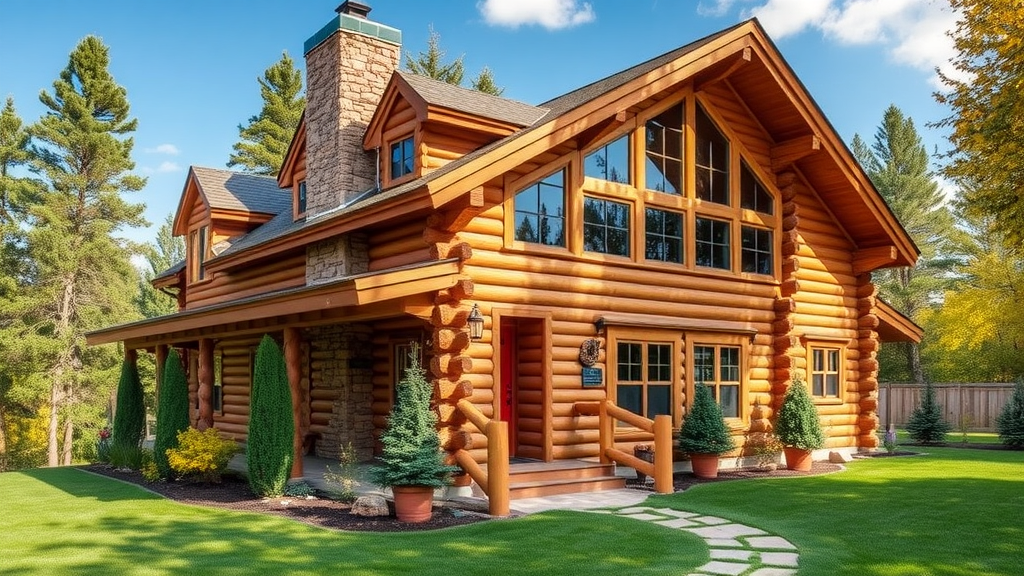
Chink Style Log Homes: Classic Design, Modern Materials
Chink style log homes offer a classic log cabin appearance, instantly recognizable by the visible gaps (chinks) between each log. These gaps are filled with modern, flexible chinking compounds that provide weatherproofing while maintaining the cabin’s traditional charm. While early cabins needed mud or moss to fill in these spaces, today’s products create more durable and insulated finishes.
This distinctive log home style is particularly valued for its rustic beauty and historic ambiance. Chink style homes are adaptable and can use round, square, or even milled logs, depending on the builder’s preference. The primary tradeoff is the need for periodic inspection and resealing of the chinking material, but the result is a home style with personality and warmth that is hard to replicate.
Swedish Cope Log Homes: Superior Weather Resistance
Swedish cope log homes employ a unique log profile: each round log is milled with a concave channel on its underside, allowing it to rest securely atop the log below. This creates a natural, interlocking fit that delivers impressive weather resistance and helps prevent water infiltration, a key concern in harsher climates.
Visually, these homes offer a clean-lined, stacked appearance that’s both rustic and sophisticated. Thanks to the engineering of the cope, these structures are less reliant on extra chinking, streamlining maintenance requirements. A Swedish cope home strikes a balance between hand-hewn tradition and advanced performance, making it a popular choice for those looking to build a log home with minimal upkeep and exceptional energy efficiency.
Timber Frame Log Homes and Hybrid Options
Timber frame log homes blend massive timber posts and beams with infill panels (often SIPs or log siding), merging old-world timber architecture with modern insulation and design flexibility. Unlike traditional log homes that stack logs for exterior walls, timber frame homes use a visible framework that can accommodate large, open spaces and expansive windows.
Hybrid log homes often combine elements of several construction techniques, allowing you to enjoy the aesthetics of exposed wood with the efficiency and innovation of contemporary building materials. This approach gives homeowners control over layout, energy performance, and overall vibe—resulting in a home that truly reflects your individual taste.
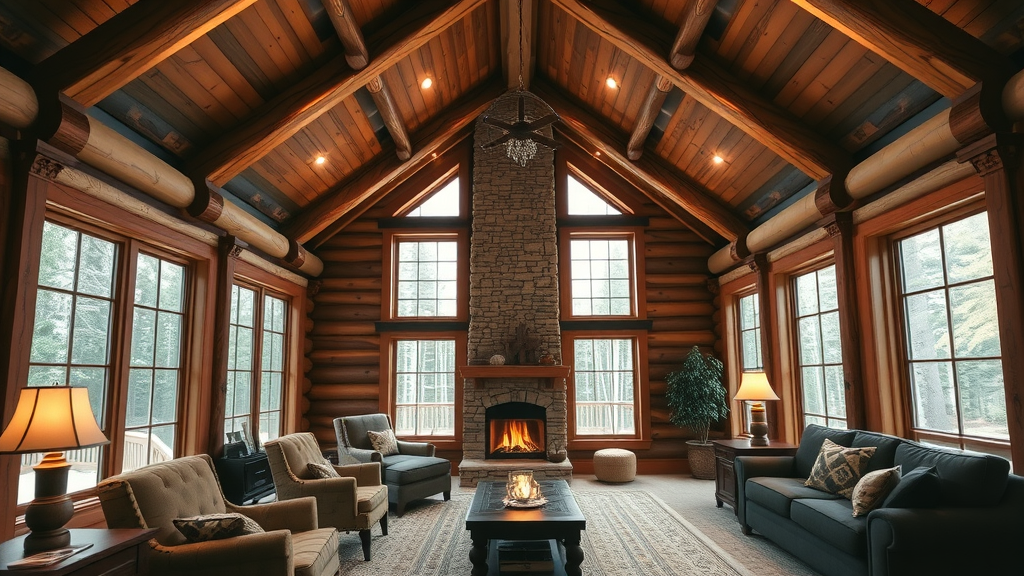
Post and Beam Log Homes: Flexibility in Home Construction
Post and beam log homes utilize upright posts and horizontal beams for structural support, giving you tremendous flexibility in floor plans and window placement. The primary difference from classic log stack homes is that logs are used for the framework rather than for solid walls, often pairing with other materials like stone or glass for dramatic effect.
This home construction style is ideal for those seeking a blend of rustic and contemporary features, with open interiors and vaulted ceilings. Post and beam log homes are easier to customize, making them an exciting option for custom builds that prioritize space, light, and functional living areas while still honoring the warmth and texture of natural wood.
Exploring Log Home Materials: From Douglas Fir to Pine
The quality and species of wood used in your log home construction will directly impact your home’s strength, appearance, and longevity. Some woods—like Douglas fir, pine, cedar, and spruce—stand out for their workability, natural resistance to insects, and beautiful grain patterns. Choosing the right material is just as important as selecting your preferred log style.
Local climate, desired look, and budget also influence your wood selection. Some regions have a tradition of using certain species based on what thrives locally, while others might import specialty woods for their unique color or durability. An informed choice here pays off with lower maintenance and longer-lasting beauty.
Douglas Fir and Other Popular Woods for Log Homes
Douglas fir is often the gold standard for log homes due to its exceptional strength, dimensional stability, and resistance to warping and decay. Its rich grain and appealing reddish-brown hue make it both practical and attractive, especially for full scribe and timber frame builds. Pine, on the other hand, is widely used for its accessibility and lighter cost, while still offering good durability and visual appeal.
Keep in mind that the species you choose will influence not only how your home looks, but the level of maintenance it may require over time. Cedar is loved for its pest-resistance and distinct aroma, but it usually comes with a higher price tag. Spruce is another cost-effective yet strong option, popular for milled log projects. Ultimately, your selection should consider climate, budget, and the unique character each wood brings to your finished dream log home.
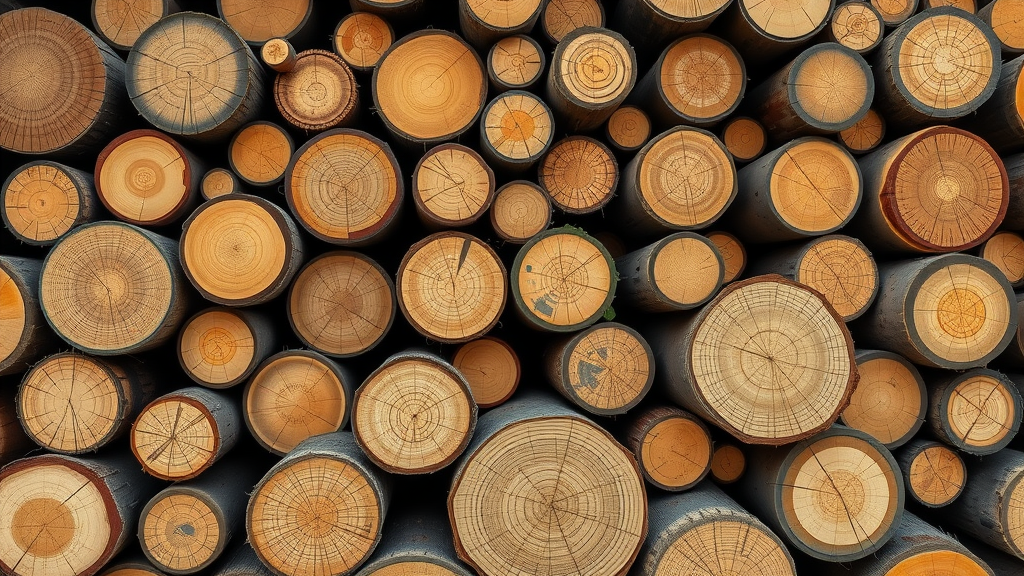
Round Log vs. Beam Log: Choosing the Right Log Style
When selecting the ideal log style for your home, it usually comes down to preference between the natural, rounded look of round log homes and the clean, squared-off profiles of beam log construction. Round logs provide a classic, traditional log cabin vibe, emphasizing natural beauty and a textured exterior. Beam logs (or square logs), on the other hand, offer a more contemporary appearance with tighter, flatter wall joints and often less need for caulking or chinking.
Your choice will impact not just visual style but long-term maintenance, insulation, and even construction costs. Round logs, especially those used in full scribe or Swedish cope designs, highlight the unique character and natural charm of the timber, while beam logs—widely used in timber frame and hybrid homes—are easier to mill consistently and fit together more precisely.
"Material choice is central to the longevity and character of your log home."
Construction Methods for Different Types of Log Homes
Whether you choose to build a traditional full log home or opt for a modern post and beam layout, the construction method directly influences cost, energy efficiency, and the long-term performance of your log home. Handcrafted and milled log techniques each bring their own benefits and considerations to the table, letting you weigh the balance of authenticity, precision, and budget.
Advances in log home construction have made it easier, safer, and more affordable than ever to design a custom home that fits your lifestyle. From heavy machinery and computer-guided mills to seasoned artisans wielding chisels and saws, every method contributes to a final product you’ll be proud to call home.
Comparing Handcrafted vs. Milled Log Home Construction
Handcrafted log homes emphasize artisan skill and individuality. Each log is carefully hand-peeled and fitted, preserving its natural contours and knots, yielding a house with authentic rustic charm and a singular look. This approach, common in full scribe and custom round log cabins, tends to be more labor-intensive but delivers unmatched character and time-tested robustness.
Conversely, milled log homes utilize machinery to cut and shape logs into uniform dimensions, simplifying the assembly process and ensuring predictable fits. Milled logs make it easier to source materials, maintain quality control, and achieve clean, modern lines in the finished home. The choice between these techniques will ultimately depend on your tolerance for labor costs, unique character, and the look you’re targeting for your dream log home.
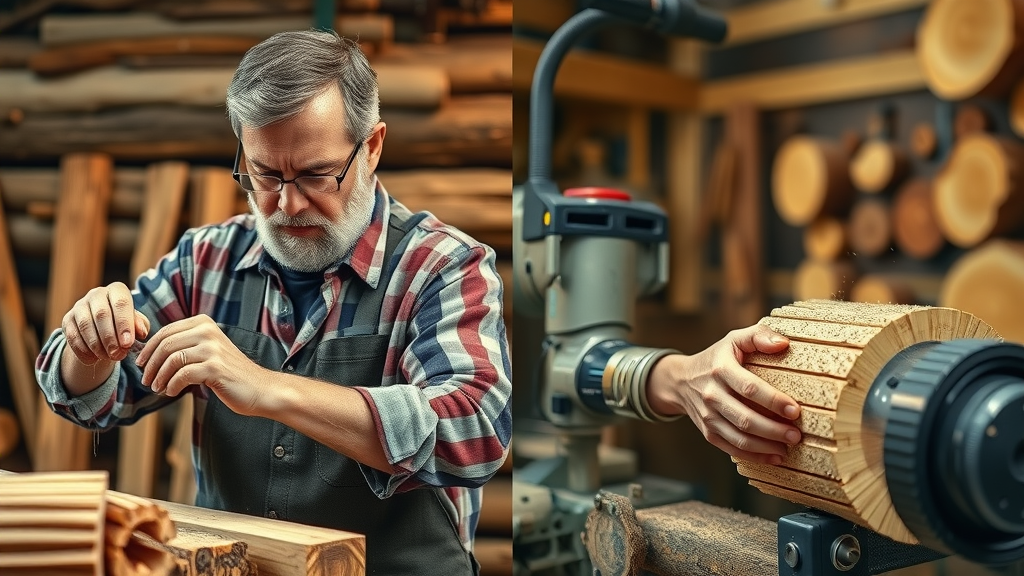
Insulation, Weatherproofing, and Modern Comforts in Log Homes
Modern log homes can be exceptionally energy efficient—if you choose the right construction techniques and materials. In full scribe and Swedish cope homes, the tight joinery between logs creates natural insulation, while chink style homes rely on state-of-the-art chinking compounds for thermal performance. Meanwhile, timber frame and post and beam log homes often incorporate advanced insulation within wall panels, providing robust protection from hot summers and cold winters.
Other key features like weatherproof stains, sealing compounds, and integrated moisture barriers help maintain the beauty and comfort of your log home for decades. Smart home technology now seamlessly integrates with log construction, so you can easily enjoy high-speed internet, efficient HVAC, and automated lighting—bringing the rugged appeal of a log cabin into the present day.
Lists: Quick Comparison of Types of Log Homes
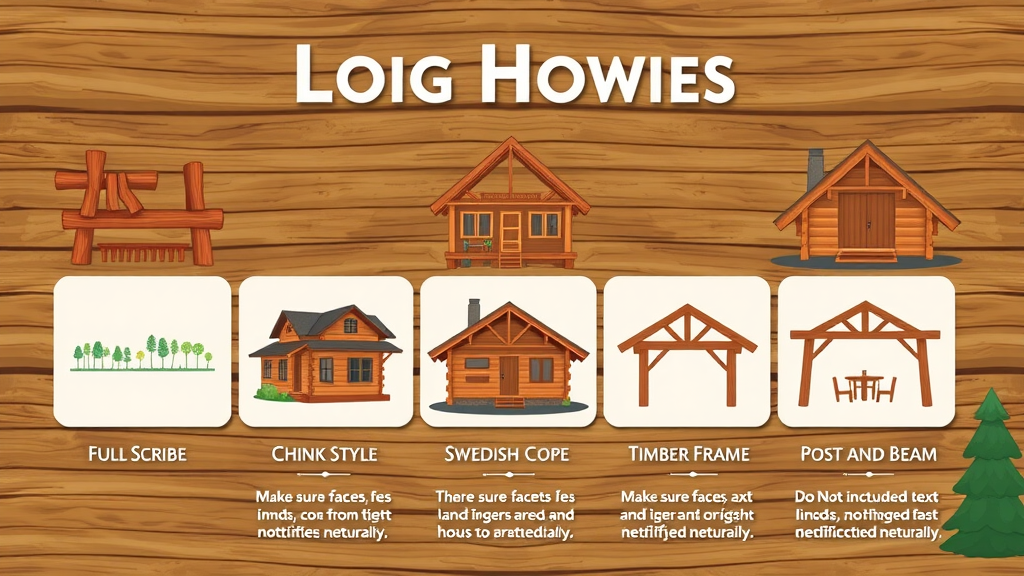
- Full Scribe
- Chink Style
- Swedish Cope
- Timber Frame
- Post and Beam
Key Considerations When Choosing Your Types of Log Homes
Selecting the right types of log homes involves much more than picking a look you like. From initial construction costs and available building materials to long-term care and insurance, each choice you make has practical consequences for both your wallet and your enjoyment. Let’s explore some of the most important factors to keep in mind before you build a log home.
Ask yourself about maintenance requirements, the insurance implications of your chosen design, and how your climate might impact your log home’s lifespan. This ensures your investment is protected, and your home remains comfortable and beautiful for decades.
Price Comparison: Log Cabin, Timber Frame, and More
The cost of building a 2,000 sq ft log cabin or log home can range widely—from $200,000 for a simple milled log cabin, up to $400,000 or more for a high-end, handcrafted full scribe or complex timber frame log home. Several variables contribute to the final investment, including log size and species, joinery technique, custom finishes, location, and foundation type.
While full log and Swedish cope homes provide enduring value and minimized chinking needs, timber frame and post and beam log homes offer flexibility—at comparable or slightly higher initial costs, depending on customizations. Always remember, investing in quality materials and skilled labor typically pays off over the lifespan of your home through less maintenance and increased comfort.
Longevity, Maintenance, and Insurance for Log Homes
Your chosen log style and construction method greatly influence the maintenance and insurance needs for your home. Log homes are naturally durable but require specific upkeep: annual checks for moisture, pest prevention, and timely restaining or rechinking. Insurance companies often view log homes as higher risk due to these unique concerns and the materials’ value—potentially raising premiums compared to stick-built houses.
Regular maintenance—especially in regions with heavy rains, snow, or termites—prolongs your home’s life and protects your investment. While the upfront effort may be higher than for traditional homes, the reward is a living space that exudes natural warmth and longevity. Engage with specialists who understand log home construction for the best coverage and peace of mind.
"Choosing the right type of log home means balancing aesthetics, budget, and long-term care."
People Also Ask About Types of Log Homes
What is the downside of log homes?
Answer: Log homes require seasonal maintenance, may be more susceptible to pests and moisture than conventional homes, and can have higher insurance costs due to unique risks involved in their construction and upkeep.
Why do insurance companies not like log homes?
Answer: Log homes often face higher insurance premiums because of the perceived risks of fire, weather damage, and costly repairs compared to traditional homes.
What is the difference between a log home and a timber home?
Answer: The primary difference lies in construction techniques. Log homes use solid logs for walls, while timber homes usually feature a frame of squared timbers with separate infill panels.
How much does a 2000 sq ft log cabin cost?
Answer: The cost for a 2,000 sq ft log cabin can range from $200,000 to over $400,000, depending on the type of log, floor plan complexity, location, and customizations.
FAQs: Types of Log Homes
What are the most popular types of log homes in North America?
The most popular types are Full Scribe, Chink Style, Swedish Cope, Timber Frame, and Post and Beam—each offering distinct looks, layouts, and construction methods for every taste and climate.
Do different types of log homes require different maintenance?
Yes. Full scribe and Swedish cope homes typically require less maintenance due to tight log fitting, while chink style cabins need occasional re-chinking. Timber frame and post and beam homes may require care for both the wood frame and infill materials to ensure durability.
Is log home construction more eco-friendly than conventional homes?
Log home construction is often considered more sustainable since logs are renewable, have natural insulating properties, and require less energy-intensive materials. However, eco-impact depends on responsible timber sourcing, energy-efficient design, and ongoing care.
Key Takeaways: Choosing the Right Types of Log Homes
- Full scribe and Swedish cope log homes offer traditional appeal and weather resistance
- Timber frame and post and beam provide modern, flexible layouts
- Material selection and construction method are crucial to your comfort and investment
- Always consider maintenance and insurance in your final decision
Conclusion: Making Your Dream Log Home a Reality
With a clear understanding of the types of log homes, their materials, and construction styles, you’re ready to make informed choices and confidently build a log home that truly fits your lifestyle.
Ready to Begin Your Log Home Journey? Explore More and Get Expert Guidance
Connect with experienced log home builders, browse design inspirations, and reach out to industry experts who can turn your dream log home into a lasting, comfortable reality.
Sources
- https://www.loghomes.org
- https://www.logcabinhub.com
- https://www.houzz.com/magazine/log-cabins
- https://www.loghome.com
- https://www.energy.gov/energysaver/timber-and-log-homes
Exploring the various types of log homes can be both exciting and informative. For a comprehensive overview, consider the article “Guide to Popular Log Home Types and Styles,” which delves into styles like chink, full scribe, post and beam, timber frame, hybrid, and corner post log homes, highlighting their unique characteristics and benefits. Additionally, “What are the differences between a Full Scribe Log Home, Post & Beam, Timber Frame and Hybrid Log Home?” offers a detailed comparison of these construction methods, assisting you in making an informed decision. If you’re serious about building a log home, these resources will provide valuable insights to guide your choices.
 Add Row
Add Row  Add
Add 



Write A Comment